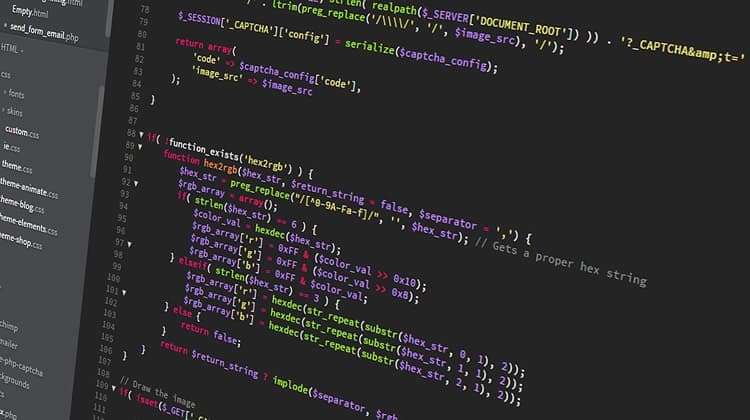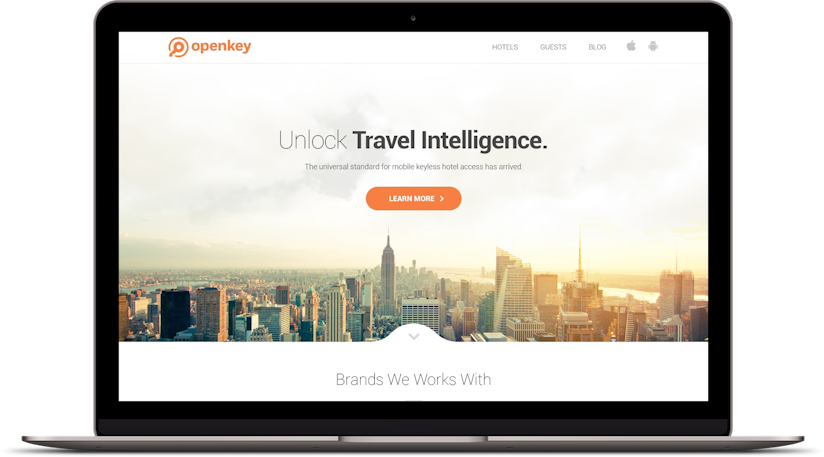All Categories
Featured
Table of Contents
- – Web Design Services - Verizon Small Business E...
- – 10 Good Deeds In Web Design - Nielsen Norman ...
- – Web Design Services - Networksolutions.com Ti...
- – Basics Of Web Development & Coding Specializa...
- – Learn Responsive Design - Web.dev Tips and Tr...
- – Why Is Web Design Important? - 6 Reasons To I...
- – Figma: The Collaborative Interface Design To...
- – Html Responsive Web Design - W3schools Tips ...
- – What Is Web Design? - Interaction Design Fou...
- – Web Design And Applications - W3c Tips and T...
- – Web Design Tutorials By Envato Tuts+ Tips an...
Web Design Services - Verizon Small Business Essentials Tips and Tricks:
Quick summary Usability and the utility, not the visual design, figure out the success or failure of a website. Because the visitor of the page is the only person who clicks the mouse and therefore chooses everything, user-centric design has actually developed as a basic technique for effective and profit-oriented web design - web design frederick md.
and the energy, not the visual style, determine the success or failure of a site. Since the visitor of the page is the only individual who clicks the mouse and for that reason decides everything, user-centric design has ended up being a standard technique for successful and profit-oriented web style. If users can't utilize a feature, it might as well not exist.
g. where the search box should be positioned) as it has actually already been performed in a variety of articles; instead we focus on the methods which, utilized appropriately, can cause more advanced style choices and streamline the procedure of perceiving provided details. Please notice that you may be interested in the usability-related articles we've published before: Concepts Of Good Site Design And Effective Website Design Standards, In order to utilize the principles effectively we initially need to understand how users communicate with sites, how they think and what are the fundamental patterns of users' habits.
10 Good Deeds In Web Design - Nielsen Norman Group Tips and Tricks:
Visitors glimpse at each new page, scan a few of the text, and click on the very first link that catches their interest or slightly looks like the important things they're looking for. There are large parts of the page they don't even look at. Many users search for something intriguing (or beneficial) and clickable; as quickly as some promising prospects are discovered, users click.
If a page provides users with top quality material, they want to compromise the material with advertisements and the design of the site. This is the factor why not-that-well-designed sites with top quality material get a lot of traffic over years. Material is more vital than the style which supports it.

Users don't check out, they scan. Notification how "hot" areas abrupt in the middle of sentences. This is common for the scanning procedure. Really simple principle: If a website isn't able to meet users' expectations, then designer failed to get his task done appropriately and the business loses money. The greater is the cognitive load and the less intuitive is the navigation, the more prepared are users to leave the website and search for alternatives.
Web Design Services - Networksolutions.com Tips and Tricks:
Neither do they scan web page in a direct style, going sequentially from one website section to another one. Instead users satisfice; they select the very first reasonable choice. As soon as they discover a link that appears like it might lead to the objective, there is an extremely excellent possibility that it will be immediately clicked.
It does not matter to us if we understand how things work, as long as we can utilize them. If your audience is going to act like you're developing signboard, then design fantastic billboards." Users wish to be able to manage their internet browser and rely on the constant information discussion throughout the website.
If the navigation and site architecture aren't intuitive, the number of enigma grows and makes it harder for users to understand how the system works and how to receive from point A to point B. A clear structure, moderate visual hints and easily identifiable links can assist users to find their course to their objective.
Basics Of Web Development & Coding Specialization - Coursera Tips and Tricks:

claims to be "beyond channels, beyond items, beyond circulation". What does it imply? Given that users tend to explore websites according to the "F"-pattern, these 3 declarations would be the first components users will see on the page once it is loaded. The style itself is easy and user-friendly, to understand what the page is about the user needs to search for the answer.
Once you've accomplished this, you can interact why the system is beneficial and how users can benefit from it. Do Not Misuse Users' Persistence, In every project when you are going to offer your visitors some service or tool, attempt to keep your user requirements very little.
Newbie visitors are willing to, not filling long web forms for an account they might never utilize in the future. Let users check out the site and find your services without requiring them into sharing personal information. It's not reasonable to force users to get in an email address to check the feature.
Learn Responsive Design - Web.dev Tips and Tricks:
And that's what you want your users to feel on your web website. The registration can be done in less than 30 seconds as the type has horizontal orientation, the user doesn't even need to scroll the page.
A user registration alone suffices of an impediment to user navigation to minimize incoming traffic. 3. Handle To Focus Users' Attention, As sites provide both fixed and vibrant material, some aspects of the user interface draw in attention more than others do. Clearly, images are more attractive than the text simply as the sentences marked as bold are more appealing than plain text.
Focusing users' attention to particular areas of the site with a moderate use of visual aspects can assist your visitors to get from point A to point B without thinking about how it really is expected to be done. The less concern marks visitors have, the they have and the more trust they can develop towards the business the site represents.
Why Is Web Design Important? - 6 Reasons To Invest In Site ... Tips and Tricks:
4. Pursue Function Exposure, Modern web styles are typically slammed due to their approach of assisting users with visually appealing 1-2-3-done-steps, big buttons with visual effects and so on. From the style perspective these aspects really aren't a bad thing. On the contrary, such as they lead the visitors through the website material in a really easy and easy to use method.
The site has 9 primary navigation options which are noticeable at the very first glimpse. What matters is that the content is well-understood and visitors feel comfy with the way they connect with the system.
Rather a cost: simply what visitors are looking for. An optimal option for effective writing is touse brief and succinct expressions (come to the point as rapidly as possible), usage scannable design (categorize the content, utilize several heading levels, use visual aspects and bulleted lists which break the flow of uniform text blocks), use plain and objective language (a promotion does not require to sound like ad; offer your users some reasonable and unbiased reason why they should utilize your service or remain on your site)6.
Figma: The Collaborative Interface Design Tool. Tips and Tricks:
Users are seldom on a website to delight in the design; additionally, in a lot of cases they are searching for the info in spite of the style - web design frederick md. Strive for simplicity rather of complexity. From the visitors' point of view, the finest site design is a pure text, with no ads or additional material blocks matching exactly the query visitors utilized or the material they've been looking for.
Finch clearly presents the information about the site and offers visitors an option of choices without overcrowding them with unnecessary content. 7. Don't Hesitate Of The White Area, In fact it's really tough to overstate the significance of white area. Not only does it assist to for the visitors, however it makes it possible to view the info presented on the screen.
Complex structures are more difficult to read, scan, analyze and work with. If you have the choice between separating 2 style sectors by a visible line or by some whitespace, it's generally much better to use the whitespace solution. (Simon's Law): the much better you manage to supply users with a sense of visual hierarchy, the simpler your material will be to perceive.
Html Responsive Web Design - W3schools Tips and Tricks:
The exact same conventions and guidelines must be applied to all elements.: do the most with the least amount of cues and visual components. Clarity: all parts should be created so their meaning is not ambiguous.
Conventions Are Our Pals, Conventional style of site elements doesn't lead to a dull website. In truth, as they reduce the finding out curve, the requirement to find out how things work. It would be an use headache if all sites had various visual discussion of RSS-feeds. That's not that different from our regular life where we tend to get used to fundamental concepts of how we organize information (folders) or do shopping (placement of items).
comprehend what they're anticipating from a website navigation, text structure, search positioning etc. A typical example from use sessions is to translate the page in Japanese (presuming your web users don't understand Japanese, e. g. with Babelfish) and provide your use testers with a task to discover something in the page of various language.
What Is Web Design? - Interaction Design Foundation (Ixdf) Tips and Tricks:
Test Early, Test Frequently, This so-called TETO-principle should be applied to every web design task as usability tests typically offer into significant issues and concerns related to a provided design. Test not too late, not too little and not for the incorrect reasons.
Some crucial indicate keep in mind: according to Steve Krug, and screening one user early in the job is much better than screening 50 near the end. Accoring to Boehm's very first law, errors are most frequent throughout requirements and style activities and are the more expensive the later on they are removed.
That means that you create something, test it, repair it and then test it once again. There might be issues which haven't been discovered throughout the preliminary as users were practically blocked by other problems. functionality tests. Either you'll be indicated the problems you have or you'll be indicated the lack of major style flaws which remains in both cases an useful insight for your task.
Web Design And Applications - W3c Tips and Tricks:

This holds for designers also. After you have actually dealt with a site for couple of weeks, you can't observe it from a fresh viewpoint any longer. You know how it is constructed and therefore you understand precisely how it works you have the wisdom independent testers and visitors of your website wouldn't have.
It can be connected to other locations such as graphic style, user experience, and multimedia arts, however is more appropriately seen from a technological standpoint. It has actually ended up being a big part of people's everyday lives. It is tough to picture the Web without animated graphics, different designs of typography, background, videos and music.

During 1991 to 1993 the World Wide Web was born. Text-only pages could be seen using a basic line-mode browser. There had been no integrated approach to graphic design aspects such as images or sounds.
Web Design Tutorials By Envato Tuts+ Tips and Tricks:
The W3C was developed in October 1994 to "lead the Web to its full potential by establishing typical protocols that promote its development and ensure its interoperability." This dissuaded any one business from monopolizing a propriety browser and programming language, which could have altered the impact of the Web as a whole.
As this has happened the technology of the web has likewise moved on. There have actually likewise been substantial changes in the method individuals utilize and access the web, and this has altered how websites are designed.
Learn more about Lovell Media Group LLC or TrainACETable of Contents
- – Web Design Services - Verizon Small Business E...
- – 10 Good Deeds In Web Design - Nielsen Norman ...
- – Web Design Services - Networksolutions.com Ti...
- – Basics Of Web Development & Coding Specializa...
- – Learn Responsive Design - Web.dev Tips and Tr...
- – Why Is Web Design Important? - 6 Reasons To I...
- – Figma: The Collaborative Interface Design To...
- – Html Responsive Web Design - W3schools Tips ...
- – What Is Web Design? - Interaction Design Fou...
- – Web Design And Applications - W3c Tips and T...
- – Web Design Tutorials By Envato Tuts+ Tips an...
Latest Posts
Mrw Web Design - Wordpress Websites For Nonprofits ... Tips and Tricks:
The Top 10 Most Important Elements Of A Website Design Tips and Tricks:
Otc Web Design Girdwood, Alaska - Web Design & Google ... Tips and Tricks:
More
Latest Posts
Mrw Web Design - Wordpress Websites For Nonprofits ... Tips and Tricks:
The Top 10 Most Important Elements Of A Website Design Tips and Tricks:
Otc Web Design Girdwood, Alaska - Web Design & Google ... Tips and Tricks: